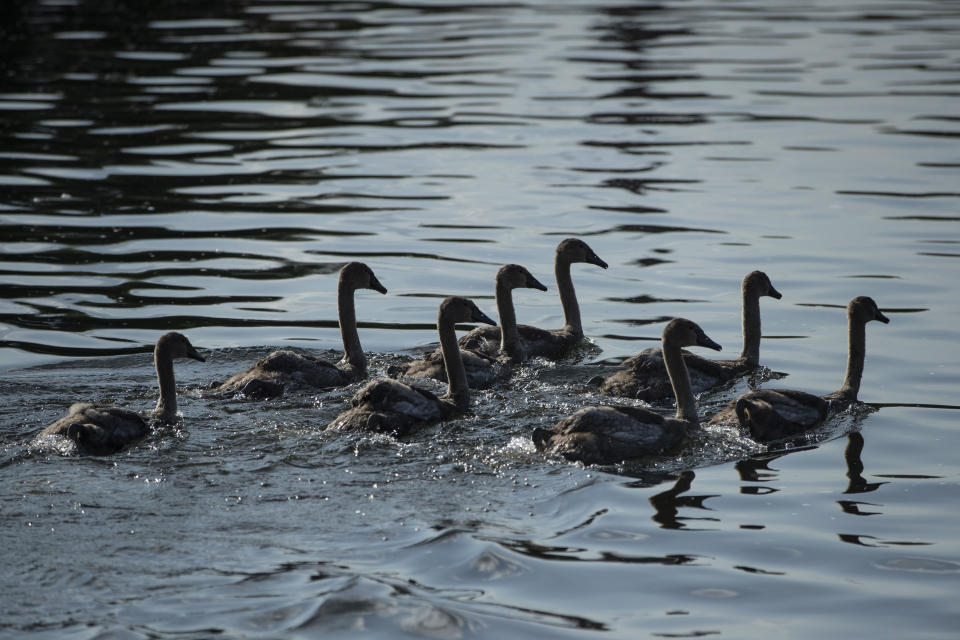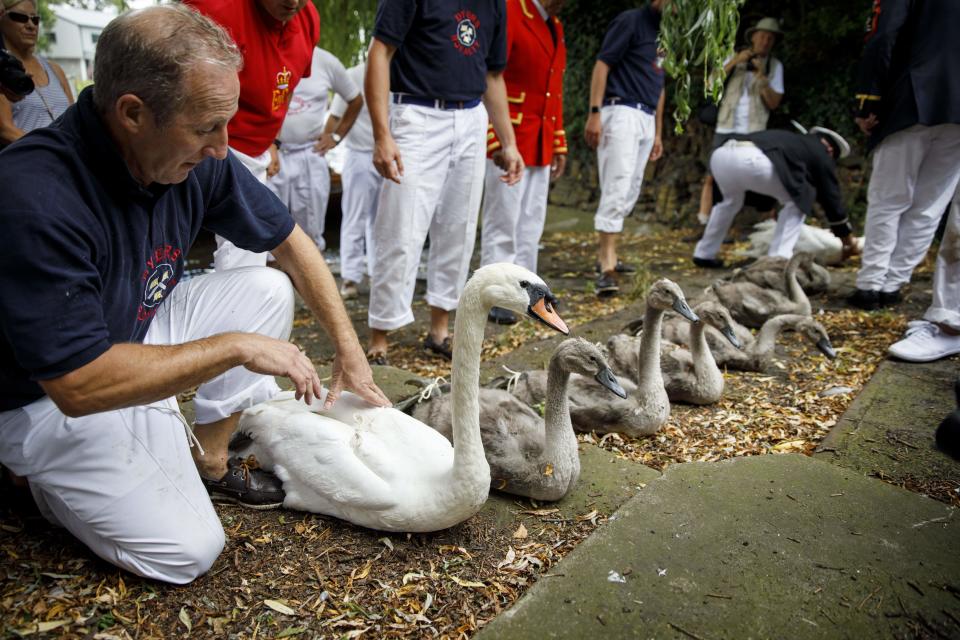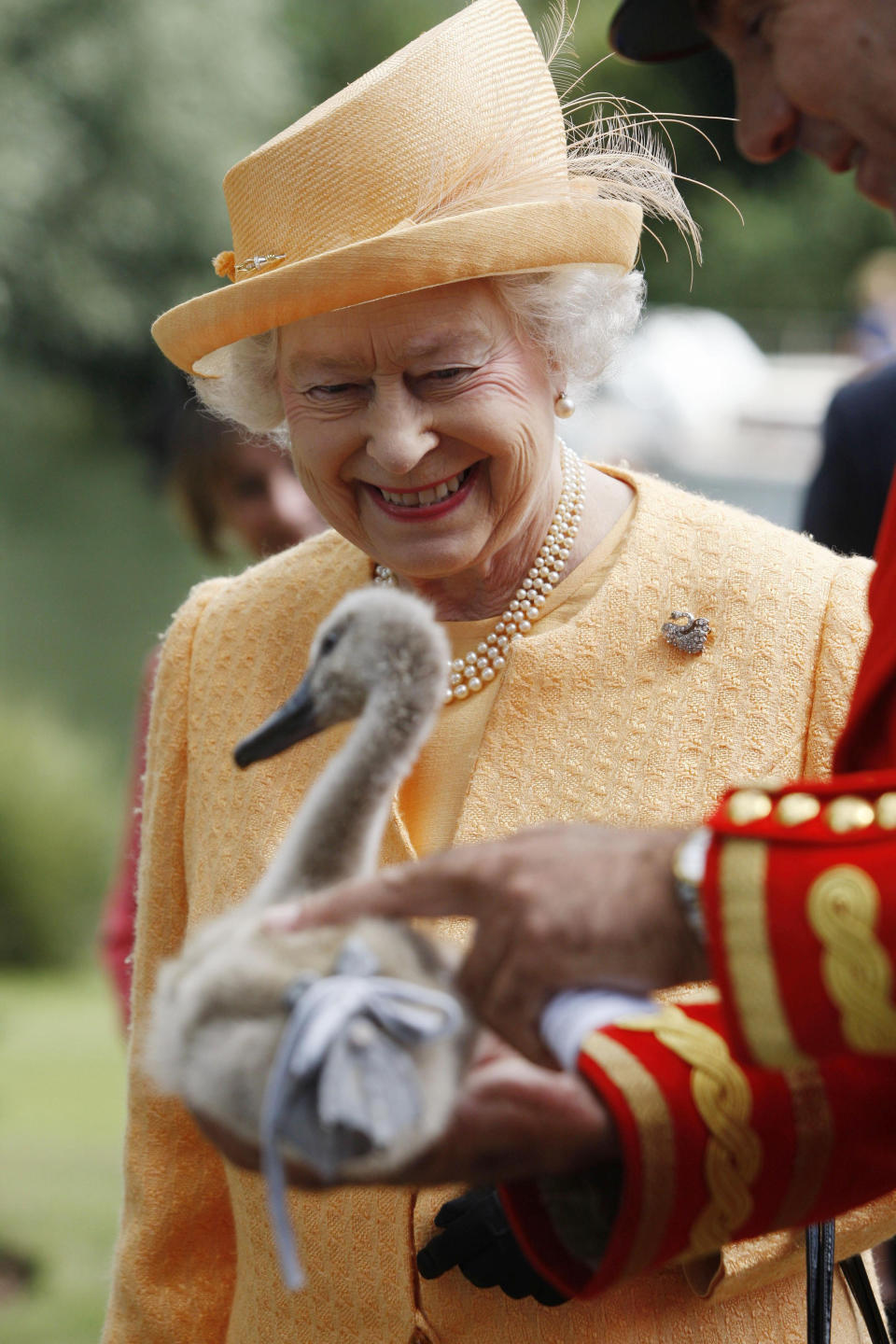Does the Queen really own all the swans in Britain?

As Queen of the United Kingdom, it is to be expected the job might come with some perks.
Fine jewellery, access to some luxurious palaces, and crowns a plenty all make sense for a monarch.
But one of the stranger things the Queen has in her collection is possession of quite a lot of swans.
The monarch still technically has the right to claim ownership of any mute swan which is unmarked and swimming in open water.
However, this right is rarely actually used and so while the Queen could own all the swans, she only really exercises the right on the River Thames.
What is a mute swan?
A mute swan is a species of swan probably most recognised in the UK. It’s a large white bird with an S-shaped neck, and an orange and black bill.

According to Wildlife Trusts, they usually mate for life, but some of them will have numerous partners.
They feed on plants, like waterweed, and live on rivers, canals and lakes all over the country.
Who else owns swans?
So if the Queen owns the unmarked swans, who owns the rest? According to the RSPB and the Royal Family, there are two other owners of swans on the Thames.
The Worshipful Companies of Vintners and Dyers have the rights to own swans on the Thames, and their right is “by prescription”.


Read more: Why does the Queen have two birthdays?
Essentially, ownership dates so far and no one else has challenged them, so it is classed as dating to “time immemorial”.
It is also in place in law, by a statute which came into place with the accession of Richard I in 1189.
The Royal Family website also lists Abbotsbury Swannery as an owner of swans in the UK. Based in Dorset, the swannery is the home of the only managed colony of nesting mute swans.
The swannery has about 600 birds, and visitors can help feed them as they walk among them.
Swans were valuable commodities in the Middle Ages, traded by noblemen for their meat. Their feathers were also used to make quills, a practice which continued for hundreds of years.
Now, swans are not eaten and are a protected species.
Swans owned by the Vintners or the Dyers previously had their bills marked to distinguish them, but now a small numbered leg ring is wrapped around each cygnet.
What is Swan Upping?
Each July a traditional ceremony is held along the River Thames, called Swan Upping.
It’s led by the Queen’s Swan Warden, currently David Barber, and involves checking the health of the birds at various locations along the river.
Royal Swan Uppers wear a scarlet uniform and travel in traditional rowing boats along the river, with members of each of the companies, Vintners and Dyers.

Read more: Buckingham Palace floor plans revealed: Exactly what's inside the Queen's main residence
The ceremony allows them to check on the health of the birds and means they can treat any injuries which could otherwise go unnoticed.
There’s also an opportunity for education, and pupils from nearby schools are invited to meet the Uppers, and ask questions about the swans.
Swan Upping takes about five days and covers a stretch of river nearly 80 miles long between Sunbury and Abingdon.
The cygnets are checked, and marked under the watchful eye of the warden, before they’re returned to the waters, with their parents.

Read more: Things you never knew were on the Queen's land - from fast food chains and shopping centres
In 2009, the Queen attended the Swan Upping for the first time in her reign.
During the ceremony, she is referred to as the Seigneur of the Swans. It was the first time a reigning monarch had been to the event in centuries, though Princess Anne had attended in the past.
In 2020, the ceremony was cancelled because of the COVID-19 pandemic.
While the ceremony was cancelled, Barber said that the quieter river, because of the coronavirus restrictions, was giving the new cygnets a better chance of survival.
Barber is also responsible for arranging for the removal of swans from the river during rowing regattas to ensure their safety. He works with swan rescue organisations to make sure the birds are looked after throughout the year.

 Yahoo Sports
Yahoo Sports 